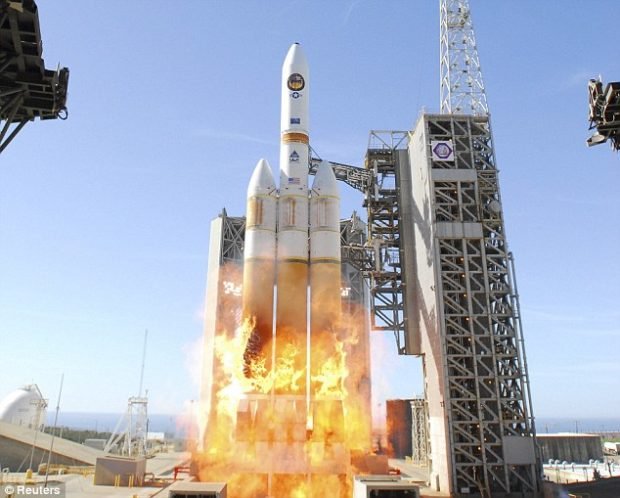FACT CHECK: Does Bitcoin Eat Up More Electricity Than What All Solar Panels Produce Each Year?

David Wallace-Wells, columnist and deputy editor at New York magazine, said in a recent interview with Vox that mining the digital cryptocurrency Bitcoin consumes more electricity than what all the world’s solar panels generate combined.
“We are now spending more electricity mining bitcoin than is produced by all the worlds solar panels combined. So we have eliminated all the progress that we made on green energy, just through bitcoin use,” Wallace-Wells said, according to a Feb. 22 transcript of the interview.
The claim also appears in the book Wallace-Wells released in February, “The Uninhabitable Earth.”
Verdict: False
Using the most commonly cited figure, Bitcoin electricity consumption stood at 62.3 terawatt-hours in 2018, only roughly one-tenth of the 589 TWh forecasted for solar generation that year. Some estimates of Bitcoin energy consumption are even lower. The claim originated from a news report that incorrectly extrapolated consumption data.
Fact Check:
Unlike traditional currencies where banks or other institutions verify transactions, Bitcoin, a decentralized digital currency, uses blockchain technology in which computers on the Bitcoin network around the world work to verify transactions. When a computer verifies a set of transactions, the reward is 12.5 bitcoins, the equivalent of around $48,000 as of publication of this article. This process is called mining.
The Bitcoin mining process is time-consuming and requires expensive equipment and lots of electricity. Some mining facilities have many thousands of servers working on the Bitcoin network.
Alex de Vries, a blockchain specialist at the professional services company PwC, created the Bitcoin Energy Consumption Index, which estimates how much electricity is used to power the Bitcoin network worldwide.
Bitcoin mining, according to de Vries, consumed an estimated 62.3 TWh in 2018 and 15.5 TWh from Feb. 10 through December 2017. The value of a bitcoin fell dramatically in 2018, and the Bitcoin Energy Consumption Index estimates that consumption is currently around 49 TWh per year.
Arvind Narayanan, an associate professor of computer science at Princeton University, provided a similar estimate during congressional testimony in 2018. Bitcoin mining consumes about 44 TWh per year, he said, but noted that this does not account for the cost of cooling the Bitcoin data centers.
Some experts disagree with de Vries’ methodology and think that his estimates are too high. Marc Bevand, an entrepreneur specializing in digital currency, estimated in February 2017 that Bitcoin energy consumption was as low as 2.9 TWh per year and as high as 6.8 TWh per year. In January 2018, he estimated it was between 14.2 and 27.5 TWh per year.
Solar panels worldwide generated considerably more electricity than what Bitcoin consumed – about 460 TWh in 2017 and 328 TWh in 2016, according to the International Energy Agency (IEA). The International Renewable Energy Agency similarly reported that solar power generated 328.7 TWh in 2016.
The IEA forecasted solar power generation to be 589 TWh worldwide for 2018 – approaching 10 times more than de Vries’ estimate for Bitcoin energy consumption in 2018. Solar is forecasted to generate 710 TWh in 2019, more than 14 times de Vries’ current consumption estimate. Using Bevand’s estimate for Bitcoin electricity consumption, the fraction would be even smaller.
Wallace-Wells told The Daily Caller News Foundation that his comparison is out of date, based on a 2018 paper estimating increases in Bitcoin energy consumption. “Instead, bitcoin crashed, and today the energy use is nowhere near that level,” he corrected in a Feb. 18 tweet.
Vox later removed Wallace-Wells’ point about Bitcoin energy consumption from its interview transcript. “The interviewee also suggested in a previous version that we are spending more electricity mining Bitcoin than is produced by all of the world’s solar panels combined. That was based on a 2018 study suggesting we were on track to break that mark by 2019, but that is no longer the case,” it said in a correction.
The paper Wallace-Wells referenced, which de Vries authored, estimated that Bitcoin network electricity usage had the potential to account for half a percent of world electricity consumption by the end of 2018.
A May 2018 article in Grist about the paper claimed that this trajectory showed that by late 2019, “bitcoin could be consuming more electricity than all the world’s solar panels currently produce – about 1.8 percent of global electricity, according to a simple extrapolation of the study’s predictions.”
However, de Vries told TheDCNF that the piece incorrectly extrapolated the data. His paper did not provide an estimate for Bitcoin energy consumption for the end of 2019 or suggest that Bitcoin energy usage would increase along the same trajectory through 2019. Grist did not immediately respond to a request for comment.
Based on the data at the time, de Vries said, room for growth in Bitcoin would be eventually exhausted because energy costs would outweigh the financial reward from Bitcoin mining.
“The Bitcoin price would have had to continue to increase as well, moving the market equilibrium higher, for that extrapolation to come true,” de Vries said.
Wallace-Wells told TheDCNF that the claim will be corrected in future editions of his book.
Though Bitcoin consumes far less electricity than solar panels generate, de Vries said that Bitcoin’s consumption is not insignificant.
“I’m equally shocked if we’re already at 10-20% of the total solar PV output (given how long it took for solar to get to that point, and how short Bitcoin’s energy requirement needed to blow up),” he told TheDCNF in an email.
The electricity cost of a single Bitcoin transaction could power more than 13 U.S. households for a day, de Vries estimates.
Follow Emily on Twitter: @emilyelarsen
Have a fact check suggestion? Send ideas to emily@dailycallernewsfoundation.org
Click here for reuse options!
Copyright 2019 Daily Caller News Foundation
Content created by The Daily Caller News Foundation is available without charge to any eligible news publisher that can provide a large audience. For licensing opportunities of our original content, please contact licensing@dailycallernewsfoundation.org.
Content created by The Daily Caller News Foundation is available without charge to any eligible news publisher that can provide a large audience. For licensing opportunities of our original content, please contact licensing@dailycallernewsfoundation.org




While bitcoin is farfetched, Batteries aren’t. It takes probably a hundred times more watt-hrs to mine, refine, construct, and provide a factory for batteries than you will ever get out of them. Oil, gas, and nuclear are best because all you have to do is extract it. The sun indirectly has been producing oil and gas continually and man doesn’t have to pay for such huge inefficiency.
Wind and solar power is so bad, that it’s trying to sell people on getting something for nothing. Just like a battery, it takes many times more total power (work) to make a battery than you’ll ever get out of it. Ditto for a windmill or a solar cell. And before those things can be made, just the bookkeeping alone costs more.